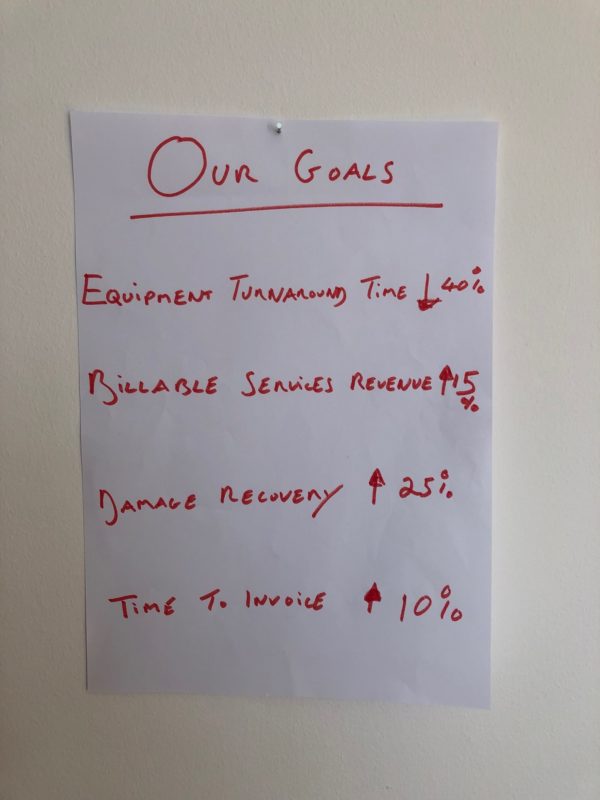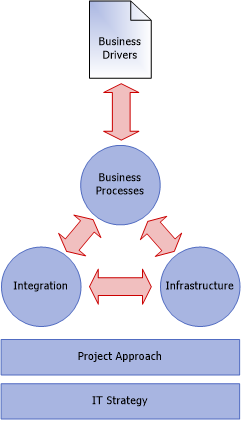Paperless Operations Part 1 – Setting Goals for Your Paperless Rental Project (VIDEO)
Project goals should be written down, photocopied and displayed on the wall in front of every project team member.
Goals are so important to a project’s success that we don’t allow any work to begin until they are written down and agreed upon.
Setting SMART Goals
Ideally, you should have between three and seven goals per project. You should test goals against the SMART principles:
- Simple
- Measurable
- Achievable
- Realistic
- Timely
Bad things can happen if your leadership team don’t set goals to direct and measure the success of your digital rental operations project.
One bad outcome is for a rudderless project driven by the internal IT team that becomes a messy “Do It Yourself” build that is late (if it ever delivers) and very expensive.
Another bad outcome is if separate departments and divisions select different suppliers to digitise different parts of their rental operations.
Because there are no clear goals and a central drive for change, there is no common purpose. For example, the lifting team selects a vendor specialising in lifting inspections.
The workshop team choose another vendor for more general-purpose maintenance and repair. Next, the logistics team choose a third vendor to digitise picklists and return notes.
The overall digital strategy feels out of control. There soon comes the point where the effort to consolidate and integrate these specialist solutions is very costly and disruptive to operations users.
When clear goals are not set, the CFO, who is often in charge of IT, must fund the project over-runs and explain why the digital strategy is late and over-budget to other leadership team members.
Meanwhile, the operations leaders and end-users struggle with paper with the associated costs and errors.
Unfortunately, it often takes a failed digitisation project to highlight the need for goal setting.
And setting goals is hard.
You will probably have multiple depots, divisions and departments shouting to get their voice heard and their problems fixed.
Setting goals with the PATHFINDER Process
So how do you set the right goals, and how can you make sure the goals drive a successful project?
 We have been delivering paperless rental solutions for over 15 years.
We have been delivering paperless rental solutions for over 15 years.
We have used this experience to develop our PATHFINDER approach to delivering digital operations.
PATHFINDER starts with a one-page summary of three to seven goals for the project signed by the person responsible for success. Aggreko, for example, had a goal to update the Rental Management System with equipment picked and returned in near real-time. Another goal was to ensure that all fuel and hours meters were accurately recorded on delivery and return, as this information was crucial to providing accurate and timely customer invoices.
PATHFINDER then maps the goals to the business processes and mobile apps that will deliver the most value. For example, if the goals are focussed on quick turnaround of equipment and lower capital spending, then the depot servicing app is more important than delivery and return apps.
Once the roadmap of app delivery has been agreed upon, the focus of PATHFINDER moves to the integration between apps and existing systems, especially the rental management system.
The final step of the PATHFINDER is to identify the physical infrastructure required to support the new digital process. For example, barcodes for serial and non-serial equipment, mobile devices, WiFi and mobile communications, on-premise or cloud servers etc.
The PATHFINDER process delivers a business-driven digital operations project using clear SMART goals. These goals are used to prioritise and phase project deliverables and measure success before investing in future phases.
Clear goal setting gives everyone in the business, from the CEO to the repair mechanic, confidence that the project will deliver a good outcome at the lowest possible cost and risk.
Tags: Equipment Rental, Mobile Workforce, paperless, PHALANX